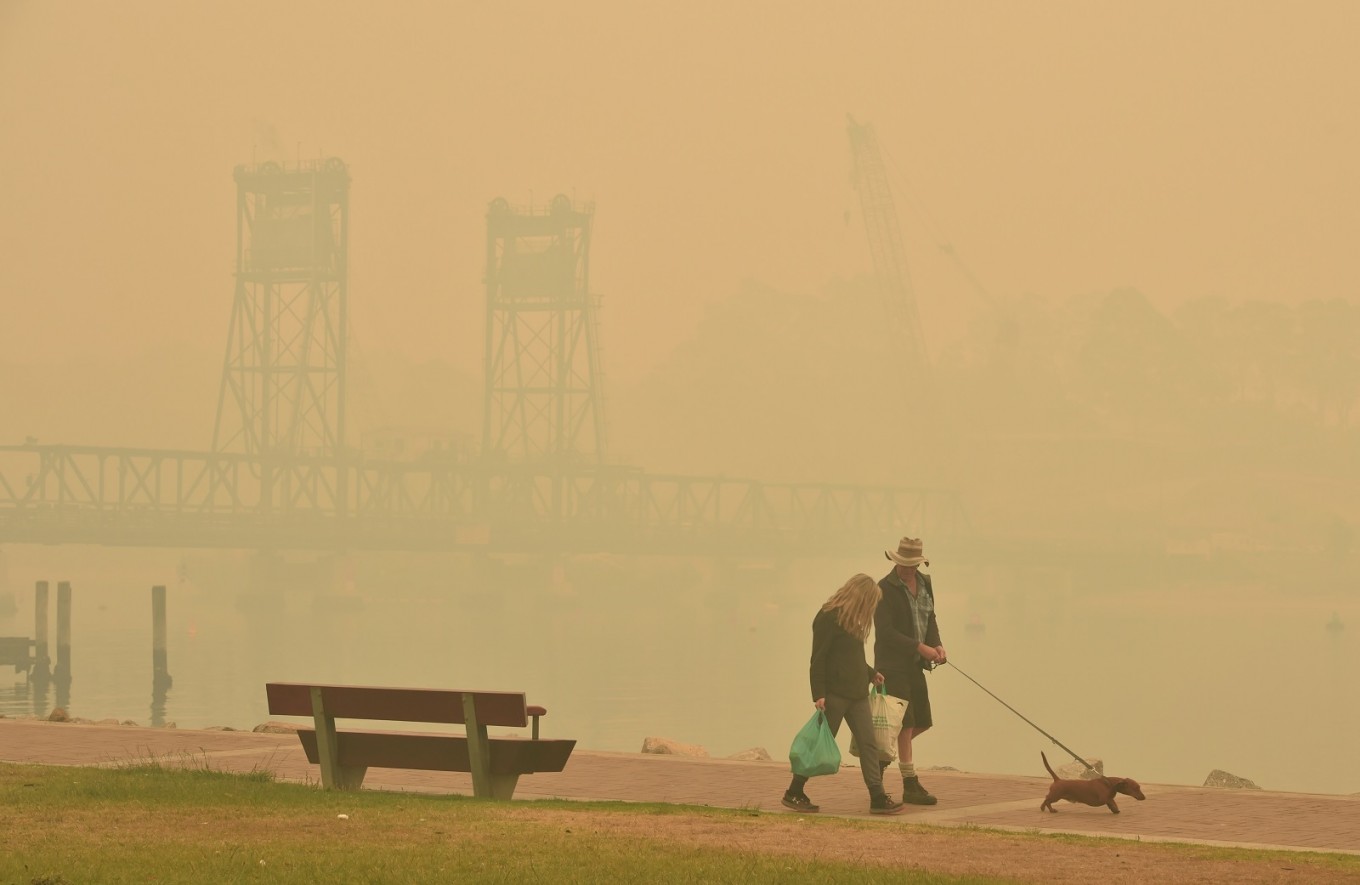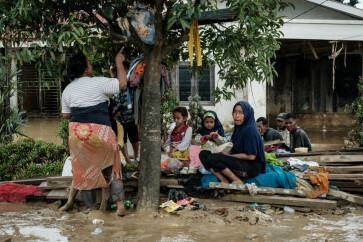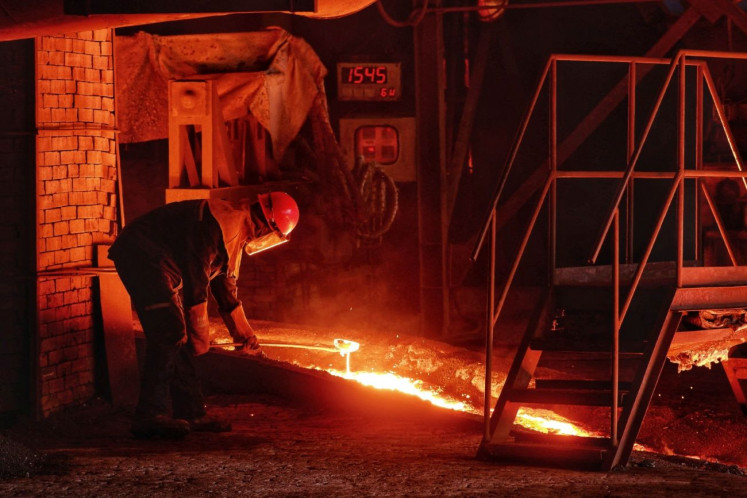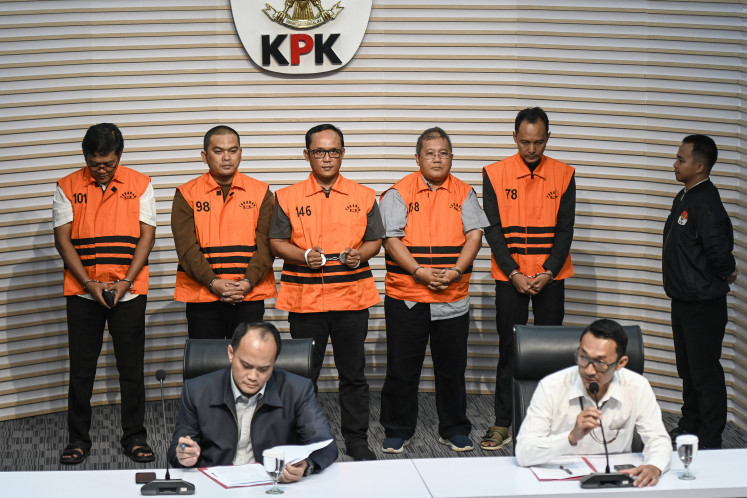Popular Reads
Top Results
Can't find what you're looking for?
View all search resultsPopular Reads
Top Results
Can't find what you're looking for?
View all search resultsAustralian bushfires a warm welcome to global warming
Currently, Canberra’s air quality is ranked as the worst of any major city due to the fires.
Change text size
Gift Premium Articles
to Anyone
A
s a person who has spent most of his life in Bandung, West Java, the thought of living in a developed country certainly triggered great excitement. Near the end of winter Canberra welcomed me with cool weather and occasional showers. As I was happily enjoying student life, summer came and brought the 2019-20 Australian bushfire season with it. Suddenly, the blissful delight turned into a bit of a worrisome experience.
Earlier, August 2019 was one of the happiest moments of my life, receiving news of my admittance to the Australian National University (ANU) for my doctoral program, with the support of the National Endowment Fund for Education (LPDP). Whether for business or pleasure, I had never spent more than a couple of weeks outside of Indonesia. Proper research was obviously in order to prepare myself for the future. Google was the obvious choice for researching information about Canberra, the capital of Australia, which hosts the ANU.
In the first few months, I found that Canberra was a very cozy place to live in, particularly for students. Even though the Australian Capital Territory (ACT) is quite compact compared to Sydney, it has everything you want: an international melting-pot community, proper public transportation modes, healthcare facilities, entertainment and tourist spots. I had a very memorable first few months in Canberra, with a few occasional trips to bustling Sydney (one was to catch a U2 concert). So I thought, Australia is nice, definitely better than Indonesia.
Summer came, and several colleagues warned me about the hot weather. I thought, “Hey, I’ve lived all my life in a tropical country, I am sure I can handle a few additional degrees Celsius of heat, right?” How wrong I was.
There were days when it would reach 40-43 degrees Celsius. It was so hot that I believed air conditioning could actually be one of the greatest inventions in the history of humankind. Many people believed global warming made the average temperature higher during summer. Well, bathing twice a day like in Indonesia became a necessity, so were sunblock and sunglasses. Suddenly, I began to miss Bandung.
With summer came the bushfires, which are quite common and natural for Australians, as the vegetation of the country has historically been associated with fire hazards since the earliest humans arrived here. Mainly dry trees and branches of eucalyptus caught fire, although the trigger could be due to human involvement, with occasional natural causes such as lightning strikes. I had thought there was no way the bushfires could be as bad as forest fires in Sumatra and Kalimantan. Again, I stand corrected.
Many experts believe the current bushfires are the most destructive and the most widespread in Australia’s recorded history. They have rampaged nationwide, affecting Queensland, South Australia, Tasmania, Victoria and Western Australia. New South Wales (NSW), the most populous state in the country, is currently heavily impacted by the fires, with approximately 1,300 houses destroyed.
Shortly after the New Year an estimated 5.9 million hectares of land and over 2,500 buildings had been engulfed in fire, killing at least 18 people. Fortunately Canberra had only a few small grass fires that were quickly dealt with by the ACT fire brigade. The real, out-of-control bushfires, mostly occur in the neighboring NSW area, surrounding Canberra, resulting in a very thick smoke haze, choking your throat and irritating your eyes. For most Canberrans, the real problem is the smoke.
Currently, Canberra’s air quality is ranked as the worst of any major city due to the fires. Hazardous levels of air are normally considered 300 or above within the Air Quality Index, with air quality stations around Canberra recording levels between 2,300 and 2,800 on Jan. 2. Face masks are sold out in every store, while people fight for discounted air purifiers. These two commodities are currently scarce in the ACT, as in other affected cities.
The current conditions in Canberra can be considered tolerable, compared to the NSW coastal town of Batemans Bay, which has been besieged by fires in recent days. What is currently happening in Batemans Bay is also happening in many other coastal cities, with thousands of families being uprooted from their houses. It felt surreal for me, seeing refugee camps installed in several parts of Australia, a developed country with good disaster mitigation and management. Still, people cannot avoid the wrath of Mother Nature.
The horror and terror of bushfires are widely spread through social media and news portals. Videos of heroic acts by the firefighters immediately went viral, as well as a video of Prime Minister Scott Morrison being heckled by bushfire victims, refusing to shake his hand during his visit to a bushfire victims' town. Most Australians believe his visit was mere publicity, as his current policies on bushfire mitigation have been deemed insufficient.
Months ago, the forecasts were there from the scientists, yet the government did little to nothing, deflecting any talk of climate change policy. Even when a group of former fire and emergency leaders warned Morrison that Australia needed more resources to tackle the upcoming bushfire season, they were also ignored.
There is also ongoing debate whether the devastation level of the current bushfire season is exacerbated by global warming. But what we do know is that the average temperature in Australia now is running about 1 degree Celsius above the long-term average. Fire seasons are starting earlier and the fire danger in many areas is growing. The challenge of climate change is not exclusive to bushfires, there is also flood and drought.
As more facts accumulated about the fires, the more I longed for Indonesia. Suddenly my WhatsApp group notification sounded. It was my uncle who lives in Bekasi, sharing a picture of his two-story house, the first floor flooded with water as high as his chest.
It takes no genius to know that what is happening in Australia has also become more evident throughout the world. Bushfires in Australia, flooding in Indonesia, the meltdown in the Arctic and rising sea levels are no longer signs of a climate emergency in the near future, it is already happening now. Is it up to the politicians to mend this? No. It is a global problem that needs recognition from every single one of us so we can seek to understand serious necessary action to curb the hazards encroaching on us all.
***
Lecturer in the public relations program, Padjadjaran University (Unpad), studying for a PhD at the School of Demography, Australian National University.










